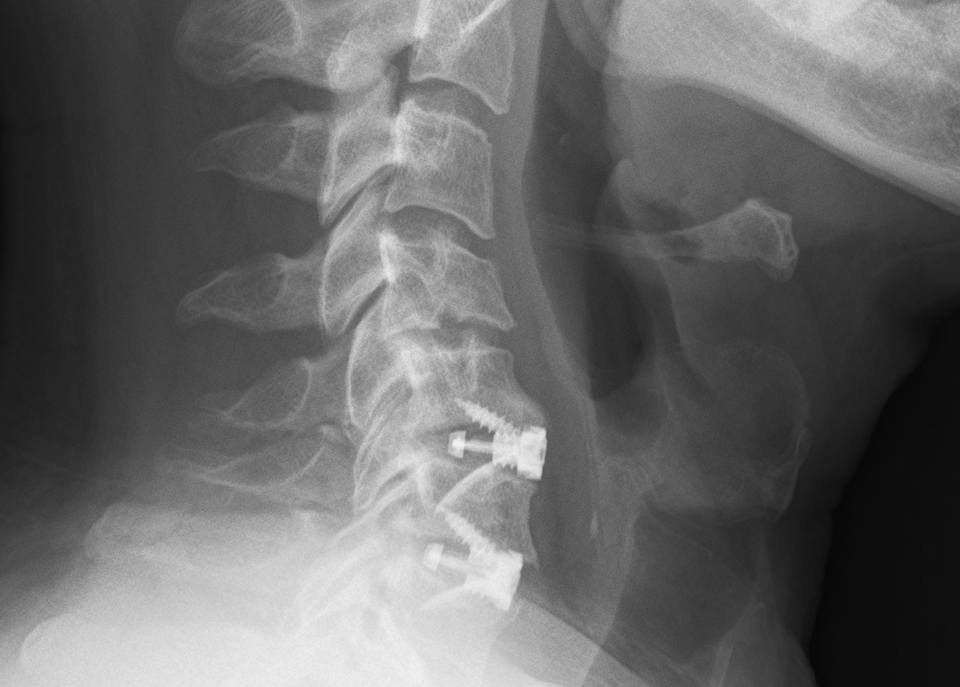Anterior Cervical Discectomy and Fusion (ACDF) is a surgical procedure aimed at relieving spinal cord or nerve root pressure in the cervical spine by removing a damaged disc and stabilizing the spine through fusion. This surgery is commonly performed to address conditions like herniated discs, degenerative disc disease, and cervical spondylosis when conservative treatments have failed.

Indications for ACDF
- Cervical Radiculopathy: Pain, numbness, or weakness radiating from the neck into the arms due to nerve compression.
- Cervical Myelopathy: Spinal cord compression leading to coordination issues, gait disturbances, or fine motor skill difficulties.
- Degenerative Disc Disease: Age-related wear and tear causing disc collapse and nerve impingement.
- Herniated Disc: Disc material protruding and pressing on spinal nerves.
- Spinal Instability: Abnormal movement between vertebrae due to trauma or degenerative changes.
Preoperative Considerations
- Imaging Studies: MRI or CT scans to identify the affected disc and assess the extent of nerve or spinal cord compression.
- Medical Evaluation: Comprehensive health assessment to determine surgical fitness.
- Smoking Cessation: Smoking can impede bone healing; patients are advised to quit prior to surgery.
- Medication Review: Certain medications, especially NSAIDs, may need to be discontinued to promote bone fusion.
- Informed Consent: Discussion of potential risks, benefits, and alternatives to ensure patient understanding
Surgical Procedure
- Anesthesia and Positioning: The patient is put under general anesthesia and positioned supine with the neck slightly extended.
- Incision: A small horizontal incision on the anterior aspect of the neck, usually on the left side to miss the recurrent laryngeal nerve.
- Exposure: Soft tissues or muscles are retracted gently to expose the cervical spine.
- Discectomy: The injured disc is removed carefully to decompress the spinal cord and nerves.
- Preparation for Fusion: The area vacated by the excised disc is readied to be occupied by a bone graft or interbody device.
- Fusion: A synthetic spacer or bone graft (autograft or allograft) is placed to ensure disc height and encourage fusion between vertebrae.
- Stabilization: A metal plate and screws can be attached to provide immediate support and encourage fusion.
- Closure: The wound is closed in layers, and a sterile dressing is applied.
Postoperative Care and Recovery
- Hospital Stay: Many patients are discharged the same day or after an overnight stay.
- Pain Management: Medications are prescribed to manage postoperative discomfort.
- Activity Restrictions: Patients are advised to avoid heavy lifting, strenuous activities, and certain neck movements during the initial healing phase.
- Neck Support: A cervical collar may be recommended to immobilize the neck and support healing.
- Physical Therapy: Initiated a few weeks post-surgery to restore neck strength and flexibility.
- Follow-Up Appointments: Regular visits to monitor healing and assess fusion progress through imaging studies.
Risks and Complications
- Infection: At operation site or deeper tissues.
- Bleeding: Intraoperative or postoperative.
- Nerve Damage: Resulting in numbness, weakness and pain.
- Esophageal Irritation or Swelling (Dysphagia): Difficulty in swallowing because of esophageal swelling or irritation.
- Hoarseness: Transient or permanent voice changes due to nerve irritation.
- Nonunion (Pseudarthrosis): The bone’s failure to unite in a correct manner, possibly leading to further surgery.
- Adjacent Segment Disease: Spinal segments above or below the fusion area degenerating over time.
- Hardware Complications: Screw or plate loosening or fracture.
Conclusion
Anterior Cervical Discectomy and Fusion is a well-established surgical intervention for addressing cervical spine conditions that cause nerve compression and instability. By removing the problematic disc and fusing the adjacent vertebrae, ACDF aims to alleviate pain, restore function, and improve the patient’s quality of life. As with any surgical procedure, understanding the indications, risks, and recovery process is crucial for optimal outcomes.
Book an Appointment
Are you suffering from chronic back pain, sciatica, herniated discs, or spinal deformities? Don’t let spine problems limit your life! Contact Us
